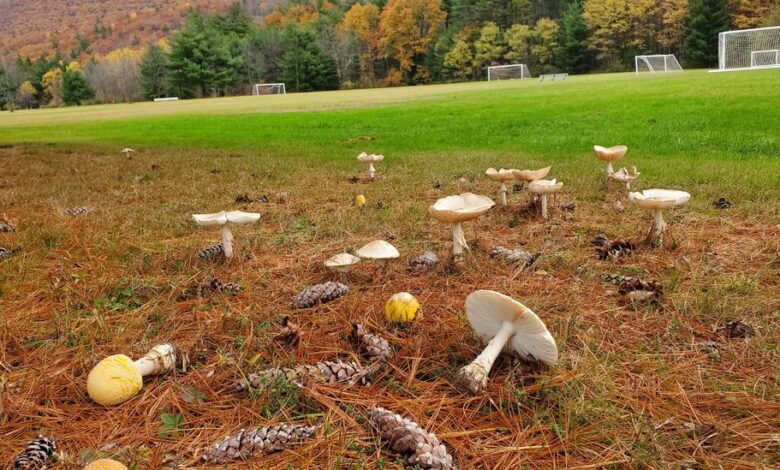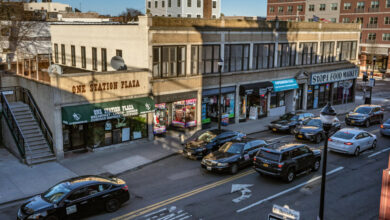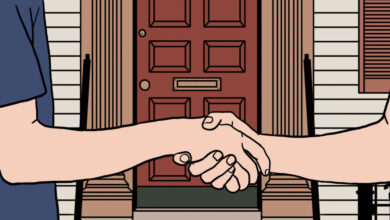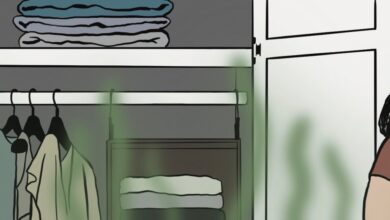What’s Up With Those Weird-Looking Mushrooms?

They appear spontaneously, or so it seems, popping up out of the mulch, rising in a single spot on the lawn or bursting from between the pathway pavers like little marshmallows. But there is an intricate master plan at work, just not one to which most gardeners are privy.
What are the mushrooms in our gardens trying to tell us — and would you be surprised to learn it’s mostly good news?
“Without the fungi we wouldn’t have soil, at least not the way we know it now,” said John Michelotti, of Catskill Fungi in Big Indian, N.Y., a family farm on land his great-great-grandfather bought, where Mr. Michelotti spent his childhood summers. “Their filamentous underground mycelia are essential for the nutrient cycling and balance of our soils, plants, microbial life — and ecosystems as a whole.”
Today, Mr. Michelotti leads guided mushroom walks, teaches classes about mushroom growing and medicinal mushrooms at the New York Botanical Garden and elsewhere, and produces health extracts from fungi — in between occasional calls to identify mushrooms in his role as a poison-control volunteer. In each interaction, he tries to foster an openness to the admittedly weird world of fungi.
Rather than rushing to do battle, he suggests that we let a sense of intrigue develop, asking what the mushroom is and what it’s doing. And maybe we’ll eventually go further, actively cultivating some as garden helpers. (There’s a bonus: certain hard-working species are edible.)
Fungi serve various critical ecosystem roles. The saprobic species act as powerful decomposers: Oyster mushrooms, for instance, work to recycle a dead tree.
Mycorrhizal fungi help plants build resilience and resistance to pathogens. In a symbiotic partnership, they translocate water and mine nutrients and micronutrients, making those resources available to plant roots. Some 92 percent of plant families rely on such services, according to the North American Mycological Association.
In return, up to a third of the energy that plants make through photosynthesis goes to feeding simple sugars to the fungi, Mr. Michelotti said: “This plant-fungi symbiosis is how the earliest plants accessed essential nutrients that helped them inhabit land in the first place.”
Ready to see the garden season ahead as a progressive backyard mushroom walk — and maybe photograph and record (rather than fight) the fungi you encounter?
Fresh ones will emerge soon. But maybe even now, on a log or wood-chip mulch, you may come upon the wizened, spore-filled remains of an outcrop of stump puffballs (Lycoperdon pyriforme), or you may find bracket fungi on a tree stump. Or perhaps you’ll eventually discover some of following.
Oddball Eruptions in the Lawn
When he works at the Catskill Fungi booth at Hudson Valley or Catskill region farmers’ markets, Mr. Michelotti finds himself serving as an unofficial ambassador of fungi. (With his characteristic myco-humor, though, he prefers to introduce himself as “the fun guy.”)
“People come up to me to ask, ‘I’ve got these mushrooms in my lawn — how do I get rid of them?’” he said. “And if you search online for ‘lawn mushrooms,’ it’s all about how to kill them.”
His message, always delivered patiently: “Can we perhaps look a little deeper about what the fungi are doing here?”
Mushrooms — the fruiting or reproductive bodies of fungi — are not a disease, but a sign of health, he explains. They indicate that, under the grass, “your soil is running with vast networks of mycelial mats and trillions of microscopic organisms working together, helping break down organic matter to make nutrients available to plants.”
His questioners might have seen some thin-stemmed, pointy-topped little Conocybe apala, mushrooms that come and go quickly, often unnoticed. Or maybe something more emphatic just erupted? From late summer into fall, soccer-ball-like giant puffballs (Calvatia gigantea) are the headliners.
“Watch the film ‘Fantastic Fungi’ if you want to really appreciate the puffballs in your lawn,” said Mr. Michelotti, who has a walk-on in the documentary — and a favorite recipe for puffball piccata.
Again: Enough with the eradication efforts. First, you can’t eradicate them — most of the fungi’s life is unseen, below ground, and continues even if the fruiting bodies are removed. And “if you pick them and toss them somewhere, or mow them, you’re actually helping spread their spores,” Mr. Michelotti said.
More Magical Mushrooms (No, Not That Kind)
Um, who’s playing ring around the pine tree out back? One of the most delightful mycological sights is a fairy ring: mushrooms growing in a circular pattern, often around a tree. The tree species may help in the fungi’s identification; such mycorrhizal relations are often specific. The ring may return in subsequent years, and even widen.
“When you see a fairy ring, the mushrooms that are popping up are fruiting at the outside edge of the underground web of mycelium,” Mr. Michelotti said, referring to the hidden network of filaments, or hyphae. “You may notice the lawn there is more lush, darker green and vibrant.”
If you get really lucky, you’ll win a front-row seat to what look like melting mushrooms, the inky cap or shaggy mane (Coprinus comatus). In the lawn, or in disturbed areas like the edges of a dirt road, the liquefying gills and caps lead us to the best mushroom vocabulary word of all: deliquesce.
As the mushrooms auto-digest, black spores that don’t get carried into the air tint what’s left behind — a very different kind of reproductive show than that of the giant puffball, whose poof of spore cloud emits trillions of spores.
And shaggy manes are one of many species that can form a fairy ring. Just imagine that.
Mushrooms in the Mulch
Mulched areas are a favorite of many decomposer species, including the charming bird’s nest fungi (including Cyathus and Crucibulum). The bird’s nest is named for its little cuplike fruiting bodies (the nests or peridia) filled with what look like tiny eggs (peridioles).
Phallic, sometimes gaudy mushrooms like elegant stinkhorns (Mutinus elegans) and Ravenel’s stinkhorn (Phallus ravenelii) are in stark contrast, seen in the mulch at Battery Park and other parks around New York City.
“They smell like a garbage truck,” Mr. Michelotti said. “But flies flock to it, and the sticky spore slime gets on their feet.” Wherever the insects land afterward, those spores are dispersed.
“These gross ones really appeal to people — and hit the wow factor,” he added.
Next, with eyes cast upward, we might spy shelf or bracket fungi growing on trees. Or perhaps fungi that are more downward-curved, like an animal’s hoof, called conks. These powerful recyclers process dead and dying wood, but most didn’t bring about the tree’s demise.
Cultivating Edible Garden Helpers
Edible mushroom cultivation — accomplished by inoculating logs with shiitake spawn or growing oyster mushrooms in coffee grounds on the kitchen counter — has soared in popularity.
Although we are already unintentionally growing mushrooms in our yards, Mr. Michelotti nudges us to try our hand at deliberately growing delicious workhorses like wine cap king Stropharia (Stropharia rugosoannulata) in mulched paths or beds. The annual almond Agaricus could be cultivated in finished compost, alongside squash vines, or you could inoculate a compost heap or undisturbed garden bed with blewits (Clitocybe).
Sources of spawn like Field & Forest Products and Mushroom Mountain offer extensive selections with detailed how-to instructions on each species.
Grow Your Fungi Appreciation
Mr. Michelotti’s message is consistent: “The best thing you can do with fungi is accept it, enjoy it and appreciate what it’s doing.” Remember, your soil does.
He is a self-taught mycologist, as was his mentor, Gary Lincoff, who died in 2018. Best known as the author of the “National Audubon Society Field Guide to North American Mushrooms,” Mr. Lincoff taught at the New York Botanical Garden for more than 40 years. In a project that ran from 2010 until his death, he recorded more than 100 species there, each living otherwise unheralded among that world-class plant collection.
Mr. Michelotti became interested in mushrooms through cooking, and then foraging. It was Mr. Lincoff who led the first event he attended, and Mr. Michelotti urges each of us to go on a guided walk or check out a local club meeting. (The North American Mycological Association website has a club directory.)
If you need more encouragement, The Mushroom Expert website by Michael Kuo is a go-to, as are the classic books “Mycelium Running: How Mushrooms Can Help Save the World” by Paul Stamets and “Mushrooms of the Northeastern United States and Eastern Canada” by Timothy J. Baroni. Doug Bierend’s “In Search of Mycotopia: Citizen Science, Fungi Fanatics, and the Untapped Potential of Mushrooms” was recently published. And if you prefer memoir-style mycological inspiration, try Long Litt Woon’s “The Way Through the Woods: On Mushrooms and Mourning.”
As for Mr. Michelotti’s guided walks, they’re less “Is it edible?” than Fungi 101. He covers the interconnection of nature through mushroom morphology, ecological roles, fungi in history and in current medicine and science. And he always finds something to add a dose of the “wow” factor.
A few years ago, he was scheduled to lead a walk in woods he had never visited. “Don’t you want to come early to find the good spots?” the organizer asked him. No, he replied, he didn’t need to plot an advance route.
“I like to be surprised,” he said. “And there is always something.”
Margaret Roach is creator of the website and podcast A Way to Garden, and a book of the same name.
For weekly email updates on residential real estate news, sign up here. Follow us on Twitter: @nytrealestate.






